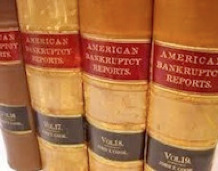Relief From Automatic Stay
 Mark Anchor Albert and Associates’ bankruptcy litigators are skilled in facing and making requests for relief from the automatic stay under provisions of the U.S. Bankruptcy Code in a variety of contexts.
Mark Anchor Albert and Associates’ bankruptcy litigators are skilled in facing and making requests for relief from the automatic stay under provisions of the U.S. Bankruptcy Code in a variety of contexts.
Section 362(d)(2) of the Bankruptcy Code provides that the Court shall grant relief from the stay:
(1) for cause, including the lack of adequate protection of an interest in property of such party in interest;
(2) with respect to a stay of an act against property under subsection (a) of this section, if:
(A) the debtor does not have an equity in such property; and
(B) such property is not necessary to an effective reorganization.
11 U.S.C. § 362, subd. (d)(2).
The proponent, who is the moving party, must initially establish a prima facie case that “cause” exists to terminate the stay. E.g., Truebro, Inc. v. Plumberex Specialty Prods., Inc. (In re Plumberex Specialty Prods., Inc.) (Bankr. C.D. Cal. 2004) 311 B.R. 551, 557; Mazzeo v. Lenhart (In re Mazzeo) (2d Cir. 1999) 167 F.3d 139, 142 (“The burden is on the moving party to make an initial showing of ‘cause’ for relief from the stay”). This requires the moving party to establish “a factual and legal right to the relief that it seeks.” Truebro, Inc., 311 B.R. at 557.
“‘Cause’ has no clear definition and is determined on a case-by-case basis ….” E.g., In re Tucson Estates, Inc. (9th Cir. 1990) 912 F.2d 1162, 1166. That determination should take into account the objectives of the automatic stay. One primary objective is to maintain the status quo as of the petition date. See First Fed. Bank v. Robbins (In re Robbins) (B.A.P. 9th Cir. 2004) 310 B.R. 626, 629 (maintaining the status quo is among the established objectives of the automatic stay); Village Nurseries v. Gould (In re Baldwin Builders) (B.A.P. 9th Cir. 1999) 232 B.R. 406, 412 (automatic stay objectives include maintaining a status quo).
This is because the automatic stay is designed to protect not just debtors but also creditors. In re Int’l Forex of Cal., Inc. (Bankr. S.D. Cal. 2000) 247 B.R. 284, 291 (the automatic stay is “intended to benefit creditors, as well as debtors”). As explained by the Ninth Circuit, “Congress designed the automatic stay to protect the relative position of all creditors.” In re Glasply Marine Industries, Inc. (9th Cir. 1992) 971 F.2d 391, 394-395 (citing In re Stringer (9th Cir. 1988) 847 F.2d 549, 551; Village Nurseries v. Gould (In re Baldwin Builders) (B.A.P. 9th Cir. 1999) 232 B.R. 406, 412 (automatic stay preserves “the relative priorities of creditors, pending a distribution of estate assets”). The automatic stay exists in part to promote the equality of treatment of creditors. Morgan Guar. Trust Co. v. American Sav. & Loan Ass’n (9th Cir. 1986) 804 F.2d 1487, 1491, cert. denied (1987) 482 U.S. 929 (“The statute seeks to ensure orderly administration of the debtor’s estate to protect the creditors’ right to equality of distribution”).
However, while the moving party has the initial burden of demonstrating good cause for relief from the automatic stay, under Bankruptcy Code section 363(g) the debtor has the ultimate burden of proving that the automatic stay should remain in place. See 11 U.S.C. § 362(g); see also In re Rcm Global Long Term Capital Appreciation Fund (Bankr. S.D.N.Y. 1996) 200 B.R. 514, 526 (“the Debtor has the burden of proof that stay relief is not warranted”). “The burden of proof on a motion to lift or modify the automatic stay is a shifting one. Section 362(d)(1) requires an initial showing of cause by the movant, while § 362(g) places the burden of proof on the debtor for all issues other than ‘the debtor's equity in property….’” In re Sonnax Indus. (2d Cir. 1990) 907 F.2d 1280, 1285, citing 11 U.S.C. § 362(g).
 Los Angeles Bankruptcy Lawyers Mark Anchor Albert and Associates Home
Los Angeles Bankruptcy Lawyers Mark Anchor Albert and Associates Home


